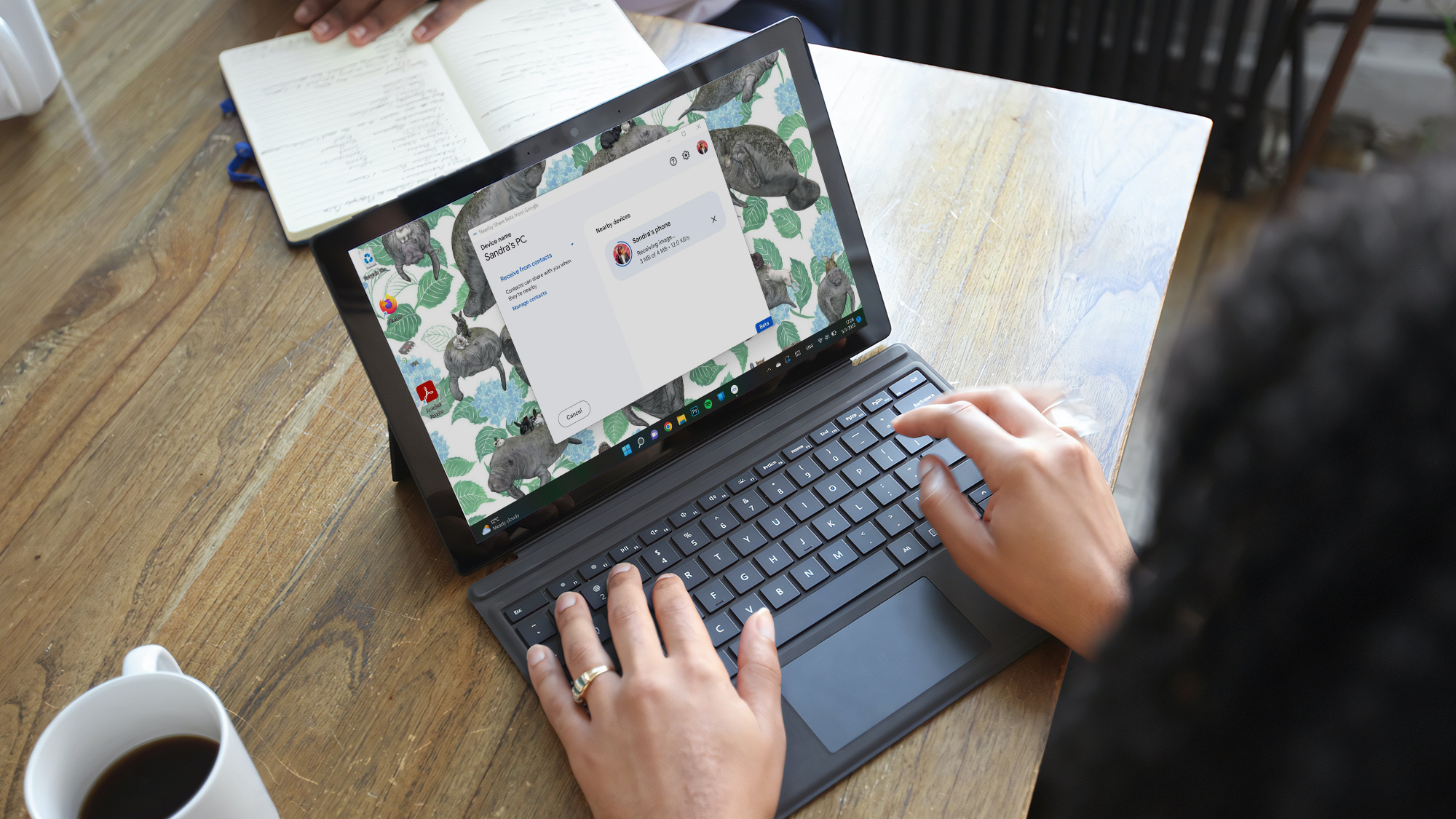

Android users are proud of our devices’ versatility, but many of us have been low-key jealous of Apple’s AirDrop, which allows iPhones, iPads, and Mac computers to seamlessly swap files within a certain physical distance. Google, naturally, came up with its own version of the feature—Nearby Share—but until recently it was only available on the company’s operating system.
Thanks to a new beta app, anyone with an Android device can now also share photos and documents with Windows 10 and 11 computers. Consider this your sign to get your PC and your Google-powered phone closer than ever.
Download the Nearby Share app on your Windows computer
Since Google introduced Nearby Share on Android Marshmallow in 2020, the feature has been built right into all devices running the mobile operating system. In short: you won’t need to download an app to your phone.
You will, however, need to have the right app on your PC. You can download it by going to Android’s official website and clicking on Get started with Beta. As you might have noticed from the site, the Nearby Share link between Android and Windows is only a beta program at the moment. This means you might find some bugs, and things might change a bit between now and the moment the feature officially launches. Don’t be scared though, as beta programs are common and the fact they’re open to the public means you shouldn’t run into too many serious problems.
[Related: 5 security questions to ask before installing any app]
Once the app is installed, it will prompt you to sign into your Google account. If you have multiple, using a different account from the one on your phone won’t prevent you from sharing files, but it will add a few steps. When you’re using the same account on your phone and PC, Nearby Share will assume you’re sending files to yourself so the process will happen automatically.
Set up the Nearby Share app on your PC
As soon as the installation is complete and you’ve signed into your Google account, you’ll need to tweak some options within the Nearby Share app. First, you’ll have the ability to change your PC’s name, which by default will be the same one you use on Windows.
Keep in mind that this name will appear on the devices of the people you’re sharing files with, so if your personal computer is named something like “HELL_RAISER_PC,” you might want to opt for a neutral one if you plan to share stuff with professional contacts.
Next, you’ll be able to set the visibility of your device by clicking the Receive from drop-down menu. It’ll be set by default to your contacts, meaning only people you’ve saved to your phone will be able to send you things. You can also opt to receive files from everyone, which will allow you to connect with all non-Apple phones and computers around you, or from your devices, which will make your PC visible only to gadgets signed into your Google account. Your last option is the more secure Device is hidden, which means you’ll have to manually change this setting every time you want to share anything through Nearby Share.
Click the cog icon on the top right of the app’s interface to find more options. Under Save received files to you’ll be able to change the folder where Nearby Share items go—it’ll be set to your Downloads folder by default. Lastly, if you want to keep some privacy, toggle off the switch next to Send usage & diagnostics data, which will prevent Google from getting information on how you use this feature.
How to send files between Windows and Android devices via Nearby Share
After adjusting those settings, make sure all the devices involved in sharing are unlocked and have Bluetooth on, and you’ll be ready to send and receive files.
From your PC, just drop a document into the open app or click on the Select files or Select folder links at the bottom of the interface. Once you do that, Nearby Share will list all eligible devices around you—pick the one you want to start the connection. If you’re sending and receiving from the same Google account, the process will be automatic, and you’ll get a notification on your phone to open the file either in Google Photos (if it’s an image) or in your phone’s Downloads folder. If the accounts don’t match, the same notification will prompt you to accept or reject the document.
[Related: Wireless sharing with Apple, Android, and Windows devices made easy]
Sending files from your phone to your PC is equally easy. Open a file in any app on your handheld device, tap Share or the share icon (a less-than symbol with circles on all points), and select Nearby. As long as your PC is unlocked, you’ll see its name on the screen—tap it and the transfer will begin either automatically or after you accept the emerging prompt on your computer screen.
